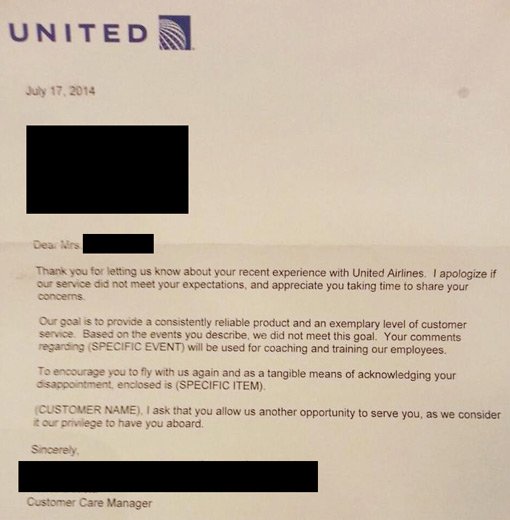Liz Doig, founder of Wordtree, shares her advice for improving your customer service emails and letters by reviewing and updating your templates.
Templates Are Still a Great Tool
There’s a lot to be said for having unscripted calls. Conversations feel natural, customers feel that your brand is warm and human – and your teams feel like their voice counts too.
But when it comes to replying to emails in writing, or sending out letters to customers, there simply aren’t enough hours in the day to create every single communication from scratch – especially if your colleagues aren’t 100% confident about their writing ability.
Which is why templated communications are still so important in contact centres.
But It’s Very Easy to Get Templates Wrong
Yet while many organizations go to great lengths to make sure phone conversations are fresh and up to date, their templated letters and emails are sometimes not reviewed or updated for years.
Instead, it’s not unusual for organizations to just keep adding new documents into their template libraries – as new products and services are added, or when new regulation or policy kicks in.
Many organizations don’t ever review all of their templates. So their libraries swell with cobbled-together communications.
Neglected Templates Result in Poor Customer Service
As a result, customers can get a very disjointed experience. One minute, they’re having a nice, engaging conversation with a colleague. The next, they’re opening an email that looks like it was written in 1886.
Or they get a letter that appears to have been written by a robot who thinks they know (and care) a lot more about the way their new dishwasher is wired than the fact that it doesn’t seem to be working any more.
When letter and email templates are hurriedly put together and never looked at again, customer experience isn’t the only thing that suffers.
Because when a customer gets an email from you they don’t understand, what’s the first thing they’re going to do?
Call you back for an explanation. And second? Possibly get vocal about the gobbledegook they think they’ve received from you.
Neglecting templated written communications can cost your company in terms of aggregate call handling time and poor customer experience – as well as having the potential to damage your reputation.
So what can you do instead?
Step 1 – Start With a Fishing Exercise
Randomly pluck 20-30 templates out of your system or systems, then print them off. If your security arrangements allow, take them home with you and read through them.
Being at home will help you get more of a feel for what a communication might feel like to a customer. If you work in B2B, try reading these templated communications when you have a particularly busy day.
Are you proud of these communications? Do they make sense to you? If your company has a defined tone of voice, do they feel like they’ve been written in it? Would your mum/flat mate/best friend like to receive it?
If you have positive answers to all of these questions, then simply schedule to repeat this exercise every six months or so.
If, however, you don’t like what you read, then it’s time to do something about it…
Find template letter examples in our article: How to Write a Good Customer Service Letter – With Examples
Step 2 – Carry Out a Full Audit of Your Templated Communications
Do you know how many templated emails and letters you have on your system? Do you know when they were created and who is using them?
It’s not unusual for a company not to be able to answer these questions. In the pressure of operating a modern contact centre, it can seem really difficult to justify time to review written communications. But the last thing you need is for one of your templates to go viral on social media for all the wrong reasons.

So if you haven’t aired out your library of templates in some time, it is worth setting aside some time to:
- find out how many you’ve got, where they’re stored and who’s using them
- dust them down, throw out anything you don’t need and rewrite anything that isn’t helping customers (or is making your brand seem uncaring or out of date).
At the end of your audit, you should have two things:
1. A chart showing the templates you have, by theme or subject area – and where they’re currently held.
It could look something like this…
| Customer Service Emails | |||||
|---|---|---|---|---|---|
| Theme | Location | Audience | First Contact | Escalation One | Escalation Two |
| Getting Started | Drive A | Bought from Store | Part Missing – Advice | Parts missing – redirect to store | Parts missing – offer voucher |
| Parts broken – advice | Parts broken – redirect to store/send images | Parts broken – offer voucher | |||
| Parts broken – offer refund | Parts broken – offer refund | ||||
| Removing battery plate | Removing battery plate – redirect to online videos | Removing battery plate – redirect to store | |||
2. Organized folders containing print-outs of your templates.
Printing off all of your customer letters and emails and having them ready to hand and organized by theme will help you when you get deeper into the review.
Quick Tip – Check That Advisors Aren’t Creating Their Own Templates
Remember, if you don’t like some of your templates, the chances are that some of your colleagues won’t either.
It’s not unusual for advisors to create their own versions of templates, storing them locally on desktops or in personal folders. So make sure you track down these versions too.
But don’t simply bin them. You may find your advisors have created better approaches that you can begin to incorporate.
Alternatively, you may find that these rogue versions aren’t really the type of thing your organization wants to be sending to customers, and this will help you to build a case to reassess your “official” library.
Step 3 – Consult With Your Colleagues
Let all your colleagues know you’re reviewing templated letters and emails – and ask for suggestions. You are likely to get feedback that includes:
- I wish there were templates for situations X, Y and Z
- I don’t like the way template abc123.doc is written, so I never use it
- We have six templates that all say the same thing – which one should I use?
- I always get calls about template abc456.doc – no one understands it
Manage expectations by making it clear that you’re gathering information, you’re keen to hear everything – but you may not be able to act on all suggestions. And really take on board what advisors are telling you. They may help you fill in gaps, identify pain points – and come up with better ways forward.
You may also be able to identify possible areas of resistance to implementing more up-to-date templates. This shouldn’t discourage you – but it will give you a heads-up about who may need a little extra persuasion.
Step 4 – Rationalize
Unless you’ve had a good spring clean of your templates recently, there are likely to be documents that you no longer need – and there will almost certainly be duplicates, covering the same situation in different words.
Armed with your chart and your print-outs, you will be able to see where you have redundancy. When you find it, delete it.
Getting rid of out-of-date and duplicate templates is good for the soul. It streamlines your process, removes confusion – and with less clutter on the system, it’s easier to see where you may have gaps.
Step 5 – Rewrite
Get professional writing resource in to help you with this. You may also want to liaise with your colleagues in marketing and brand.
If your company has a documented tone of voice or preferred way of writing, share it with your new writing friends. Similarly, if your colleagues in marketing suggest a particular approach to messaging, then make sure your writers know about it.
Write your templated documents from your customer’s point of view. What do they want to see first – say, in a response to an insurance claim? Do they want to know all about your investigation into their claim and what it revealed? Not really. They want to know if you’re going to pay out or not. So say that first.
Alternatively, if your customer wants to get a refund – don’t start off a communication with six paragraphs explaining your policy. Tell them what they want to know first, and then follow up with the detail and qualifying information.
In other words…
DO THIS…
Dear Liz,
We can’t offer you a refund
Thanks for getting in touch with us about your swimsuit. I’m sorry you don’t like the colour of it when it gets wet.
If you think it’s faulty, you can send it to us for testing. However, please bear in mind that it is common for lighter pinks to go slightly darker when they’re wet.
I know this isn’t the answer you were hoping for – but I do hope you’ll still enjoy shopping with us…
NOT THIS…
Dear Liz,
Request for refund
Under the Consumer Rights Act 2015, consumers may be entitled to a refund, replacement, repair and/or compensation where goods are faulty or not as described; they are also entitled to a refund and/or compensation where the seller had no legal right to sell the goods.
Unfortunately, it does not seem that you qualify in either instance, as your order SS20200021 was not faulty and the second condition does not apply.
We will therefore be unable to provide a refund in this case…
Remember your customers are short of time. And remember that they have expectations of your organization.
For great advice on how to best rewrite customer service letters, read our article: “Dear Valued Customer” – 12 Steps to Writing a Great Customer Letter
Step 6 – Create Process and Ownership
You don’t want your template library to become bloated and wonky a few months after you’ve done a big clear-out. To stop this happening, it helps to put some process in place.
The first thing you should establish is ownership. If your library is going to be truly awesome, someone needs to be responsible for it. They will act as chief librarian. They will decide what goes on the shelves, what it should look like – and how colleagues can use what’s on the shelves.
They should also, in collaboration with team leaders and others, create the processes involved in adding to and using the library.
These processes should cover:
- How you add a new template to the library – how it should be written and who should check it
- How to access the library
- How to make suggestions for additions to the library
You should also put measures in place to prevent people making up their own versions of templates and storing them locally. And of course, you need to make using the new templates part of QA – so your quality processes may need to be updated too.
Step 7 – Training and Support
Help your advisors to understand how to use the new resources.
Organize short-burst writing training, so that everyone can fill in the blanks with confidence. And make sure that during training you explain how the changes will make working life easier – and customers happier.

This kind of training also gives you a great opportunity to reconnect everyone with the fact that customer communications are all part of a customer’s brand experience, and that everyone has a role in delivering this.
Written by: Liz Doig at Wordtree
For more on writing great emails and letters, read our articles:
- 10 Top Tips to Improve Email in the Call Centre
- How to Write a Good Customer Service Letter – With Examples
- How to Write a Customer Apology Letter – With an Example
Author: Liz Doig
Reviewed by: Megan Jones
Published On: 6th Jun 2022 - Last modified: 13th Oct 2025
Read more about - Customer Service Strategy, Customer Feedback, Editor's Picks, Email, Language, Liz Doig, Rapport, Service Strategy






































